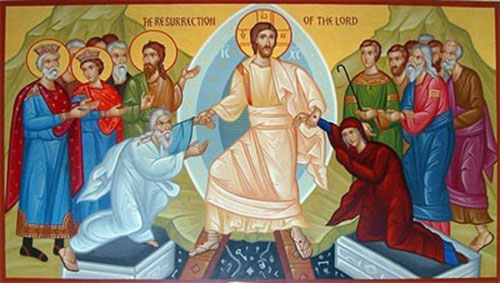
Easter is 50 Days (click “going”)
Image source and more information about the Icon of the Resurrection
Appropriately on the feast day of St Benedict (for a blog interested in monasticism and liturgy)
The Anglican bishops meeting for the Lambeth Conference are following a consultative process called Indaba. This is reminiscent of Benedictine and other styles of meeting.
This Sunday, 27 July, Roman Catholics and Episcopalians and others will essentially pray the same prayer.
July 25 1968 Pope Paul VI published his Encyclical letter Humanae Vitae. His commissions, set up in response to the development of oral contraceptives in…
Lambeth Bible Study with Joanna Clegg A famous poet representing the other party (Alexander Pope), once said ‘know thyself, presume not God to scan; the…
This image will be on the cover of my coming book “Heretical icons”. As your link says it well, it is not the resurrection, but the harrowing of hell. The purpose of the incarnation was not the harrowing of hell, but the physical, corporeal, actual resurrection of our Lord. The icons of the resurrection (and there are some) depict Christ erect, coming out of the tomb.
Our religion does not promise happiness of the soul only (as this image would say). Even “out of hell”, Adam, Eve, David, the apostate Salomon and other figures of the image are only in-between, expecting their own resurrection. This image is an utter negation of the doctrine of the resurrection itself.
The very foundation of iconography is the incarnation. Between the Lord’s passion and his resurrection, we have a separation of his body and his spirit. (Without that separation, death is not death, but docetism.) We only may paint the incarnate Lord. One of the important things when represent the crucifixion is that the Lord MUST be alive on the cross. The in-between may not be represented.
Last but not least, Christ has to be in his red and blue garments, representing his Godhead and humanhood.
Let us know when your book is out, George. Blessing.